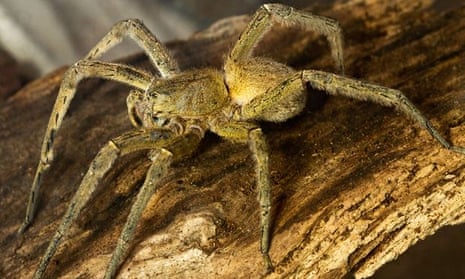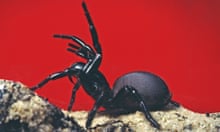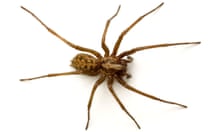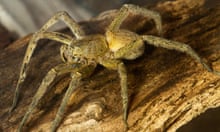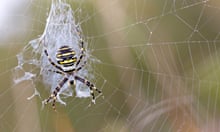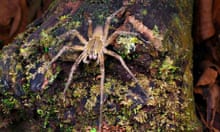The Brazilian wandering spider – which according to reports over the weekend emerged from a South London family’s Waitrose delivery – is one of the most infamous species of venomous spider.
It is actually a very beautiful spider, quite big, with about a 15-centimetre (six-inch) leg span. It is also quite aggressive, and while most spiders run away when confronted, the Brazilian wandering spider might stand its ground and has a particularly impressive stance – it rears up on its back legs and looks quite menacing. If it feels threatened it adopts an “attack first, ask questions later” sort of defence.
The species of Brazilian wandering spider that people tend to talk about are Phoneutria fera and Phoneutria nigriventer, which sometimes come into the UK – mainly because of things like fruit being imported. Accidentally imported spiders such as the one encountered by the family in South London are rare these days, however, because importers tend to clean off the fruit very well. There’s still the slight chance that one might be hidden away in a hand of bananas and get through.
Venom and bites
Although many types of spider have a venomous bite, the Brazilian wandering spider is one of the four types that have a more potent venom, and as such you would need a Dangerous Wild Animals (DWA) licence to keep it as a pet. Although spider bites do happen in South America, where this species is common, they are incredibly rare in the UK, and antivenins are available to counteract their venom.
As with most spiders, the Brazilian wandering spider will tackle things that are its own size. So in most cases that’s going to be large insects, but it will also take on small snakes, frogs and anything else it comes across that it can grab hold of. The venom is there mainly to subdue prey, but also as a warning: they have red hairs around the fangs and so a lot of animals know to leave them alone. It is a bit of an evolutionary quirk that some species have venom that has such a potent effect on big mammals such as ourselves.
Once the prey has been bitten, the venom immobilises and kills it, then the spider injects enzymes that break down the body tissues. The spider is then able to consume it.
Any time people are badly affected by a spider bite, the news tends to be plastered all over the press, blowing it out of proportion. Very few people get bitten by spiders or get a serious reaction to the bite. So it’s worth putting this in context. There are relatively few cases where the Brazilian wandering spider has actually caused any problems.
Can it survive the Great British weather?
The Brazilian wandering spider can’t survive our climate. It is a tropical species and there’s no expectation that it will be able to survive our harsh winters – that’s one thing we’re kind of lucky about if you want to look at it that way. What’s more, a centrally heated home during winter is a dry habitat that is not a good atmosphere for tropical spiders, and it probably won’t provide enough food for them.
We run the Friendly Spider Programme at ZSL London Zoo to treat people with arachnophobia because fear of spiders is very common. We teach people that houses are generally not great habitats for spiders.
But these are very valuable creatures. We’d be in serious trouble if there weren’t spiders around. In particular they act as biological controls, eating lots of other pests and creatures that might be more of a problem and pass on disease to humans. So the odd reported case of a spider bite is not that bad considering the enormously positive things they do generally.
Dave Clarke, head of invertebrates at ZSL London Zoo, was speaking to Guardian trainee journalist Aisha Gani
